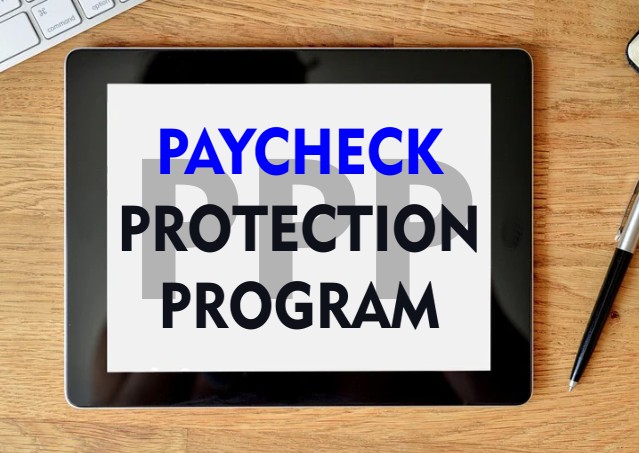 The Paycheck Protection Program (PPP) presented a lifeline for small business owners blindsided by COVID-19. These low, 1% interest loans helped small businesses stay open — mostly in a scaled-back capacity — as the pandemic raged.
The Paycheck Protection Program (PPP) presented a lifeline for small business owners blindsided by COVID-19. These low, 1% interest loans helped small businesses stay open — mostly in a scaled-back capacity — as the pandemic raged.
PPP loans provided by financial institutions could cover operating expenses such as rent, other overhead costs, and, most importantly, employee pay so that workers could continue to receive salaries even if they weren’t working. If the employer maintained the same personnel headcount and payroll for eight weeks, the loan is to be forgiven. (However, the PPP Flexibility Act extended this timeframe to 24 weeks.) Sounds easy enough? Well, not quite. To qualify for loan forgiveness, you must prove that you fulfilled all conditions of the agreement. If there are shortfalls, a percentage of the loan may have to be repaid.
CARES Act and PPP
In March, President Trump signed the Coronavirus Aid, Relief, and Economic Securities (CARES) Act. The government created the $2.3 trillion relief package to help individuals and employers who had been impacted by the COVID-19 pandemic. An essential component of CARES is the Paycheck Protection Program (PPP), created under Section 7(c) of the Small Business Act. PPP’s objective is to allow small business owners to apply for loans to cover eight weeks of operating expenses, primarily payroll, to offset employee layoffs or furloughs due to the reduction or cessation of business hours attributed to the pandemic. The Federal Government allocated $600 million to PPP, which is administered by the Small Business Administration (SBA).
In late May, Congress passed The Paycheck Protection Program Flexibility Act. Employers prompted the extension because of their inability to restore full employment at the end of the eight-week loan period, which concluded at the end of May, while many cities and states were still on lockdown. The updates to the PPP:
- Extend the deadline to use a PPP loan to December 31, 2020, from June 30, 2020.
- Changed the proportion of the loan that businesses must spend on payroll from 75% – 60%.
- Expanded the repayment period to 5 years instead of 2. Note that the five-year payback period only applies to loans taken out after June 5, 2020.
- Eliminates the rule that penalizes businesses if they don’t maintain their pre-COVID headcounts because they could not resume full business operations.
- Clarifies an earlier ruling that provided a safe harbor for business owners who made a good-faith effort to rehire furloughed or laid-off staff but could not do so.
- Provides borrowers applying for loan forgiveness 10 months from the last day of the covered period.
- Principal payments, fees, and interest are deferred until the lenders and the SBA make the final forgiveness decision. Banks have 6 days to review loan forgiveness applications, and the SBA has another 90 days.
- Expands the forgiveness period for expenses from 8 weeks to 24 weeks or until the end of the year — whichever comes first.
- Employers can now defer their portion of payroll taxes. Previously, employers had to repay the deferred payroll taxes by May 31, 2021. Now, employers can pay taxes in two installments: the first payment is due on December 31, 2021; the second on December 31, 2022.
Eligibility
To meet the PPP requirements, businesses must have 500 employees or less. Luckily, this requirement captures most of the foodservice and hospitality industries, “mom-and-pop” businesses, including not-for-profits, veterans’ organizations, Tribal concerns, self-employed individuals, sole proprietorships, and independent contractors. Companies with more than 500 employees could also be eligible under certain conditions.
The terms of the loan are 1% interest, and loans taken out before June 5, 2020, must be repaid within two years; loans taken out after June 5, 2020, have five years to be repaid. The loan amount is based on the business’s average monthly payroll for 2019, and business owners could receive 2.5 times that amount to cover payroll and related expenses for eight weeks. Business owners can utilize the loan for other expenses, such as rent/mortgage and utilities.
Requirements for Loan Forgiveness
Because the government rolled out PPP so fast, it is continually being tweaked and updated, which confuses borrowers. As well, the pace at which the coronavirus spread across the nation caused issues that could not possibly have been foreseen. Criteria for loan forgiveness include:
- 24 weeks of coverage
Eligible expenses are those that incurred over 24 weeks. The clock begins on the first day you receive the funds. However, if you received your loan before June 5, you can still use the eight-week timeline. December 31, 2020, is the final date to incur eligible expenses, so if you received your loan after July 16, 2020, you wouldn’t have the entire 24 weeks.
- The 60/40 rule
Business owners must use 60% of the loan for payroll and associated costs.
- Staffing requirements
The number of employees on your payroll must be maintained.
- Payroll requirements
You must maintain a payroll of at least 75% of the total salary. This requirement applies to every employee who did not earn more than $100,000 in 2019.
- Grace period for rehiring
You can rehire any laid-off or furloughed staff and reinstate pay that was decreased by more than 25%. The reduction in staff and compensation must be due to COVID-19 and have taken place between February 15 and April 26, 2020. The deadline for reinstating employees is December 31, 2020.
Repayment
In August 2020, loan recipients could begin submitting the paperwork for loan forgiveness. Specifically, Form 3508 or 3508EZ. Form 3508 is complex (4 pages) and requires substantiating schedules and worksheets. The Treasury Department released the EZ version in June 2020, and it streamlines the process (2 pages) for employers who:
- Have 0 employees and are self-employed
- Did not reduce employee compensation by more than 25%, and did not offer employees reduced hours; or
- Negatively impacted business activity due to COVID-19 health orders, and did not reduce employee compensation by more than 25%.
So if you can answer “yes” to any of these questions, then you can use Form 3508EZ. If not, then you must use Form 3508. For both forms, the SBA will review your responses to determine if you met all of the requirements of the loan; if not, the SBA will assess the amount you must repay.
- Review the checklist to determine whether you are eligible to use Form 3508EZ.
- If you qualify, then move on to the next section, which asks for basic information such as the amount of the loan, disbursement date, number of employees at the time of application, and time period. Then you will basically answer the same question about the number of employees you have at the time you are applying for loan forgiveness.
- Line 1: Payroll costs. This line includes payroll costs, cash compensation, employee benefits, and owner compensation. There are detailed instructions on how to calculate these costs. If you want to include non-payroll costs, do so here.
- Line 2: Business mortgage interest payments
- Line 3: Business rent or lease payments
- Line 4: Business utility payments
- Calculate potential forgiveness amounts. Add lines 1, 2, 3, and 4.
- List the amount of your PPP loan.
- Payroll costs. Divide line 1 by 60%.
- Forgiveness amount: Enter the lesser amount on lines 5, 6, and 7.
Supporting Information
You need to be able to support the information you entered on Form 3508EZ. There are three parts to this: Representations and certifications, documentation, and borrower demographic information.
Representations and Certifications
There is a list on page 2 that the borrower will need to initial.
Documentation
You need to submit information to support your payroll claims. These include bank statements, tax forms, payroll tax filings, state quarterly reporting, unemployment insurance, tax filings reported, payment receipts, canceled checks, or account statements documenting the amount of any employer contributions to employee health insurance and retirement plans. There are other records that borrowers need to keep to help support their forgiveness application.
Conclusion
If you received a PPP loan to keep your business afloat during the pandemic, congratulations! Hopefully, it helped you and your employees through a stressful time. While you probably want to know the outcome as soon as possible, some experts suggest taking your time to apply for your loan forgiveness, especially if you are eligible for the full 24-week period and may have the opportunity to increase payroll. Second, if the government releases new relief laws, there may be even more revisions to the CARES Act/PPP. Lastly, don’t be in a rush due to the sheer volume of applications that the SBA has to process. Hopefully, this information will make the process a bit less stressful, and you receive a favorable response to your application.
 About Stephanie: Stephanie Ng is the Executive Committee member responsible for Finance at New Sight Eye Care, a charity registered in the United Kingdom and Hong Kong. She oversees the financial aspect of New Sight in Hong Kong, including accounting, taxation, financial management, and compliance.
About Stephanie: Stephanie Ng is the Executive Committee member responsible for Finance at New Sight Eye Care, a charity registered in the United Kingdom and Hong Kong. She oversees the financial aspect of New Sight in Hong Kong, including accounting, taxation, financial management, and compliance.
She began her career as an investment banker at Lehman Brothers in New York and Morgan Stanley in Hong Kong before joining her client to work in the Group Finance Department, where she spent five years specializing in corporate finance, mergers and acquisitions, and debt refinancing. She also extended her role to management accounting and financial accounting and obtained her US CPA qualification.
Stephanie also is a published author of the book How to Pass the CPA Exam. Additionally, she created I Pass the CPA Exam, the first CPA help site in 2010. Her guidance and mentorship have helped hundreds of thousands of candidates pass their exams.
Website: https://ipasseaexam.com/
Facebook: https://www.facebook.com/ipasseaexam/
Twitter: https://twitter.com/ipassthecpaexam
LinkedIn: https://www.linkedin.com/in/stephanieyng/ and https://www.linkedin.com/company/i-pass-the-cpa-exam/
Pinterest: https://www.pinterest.com/passthecpaexam/

